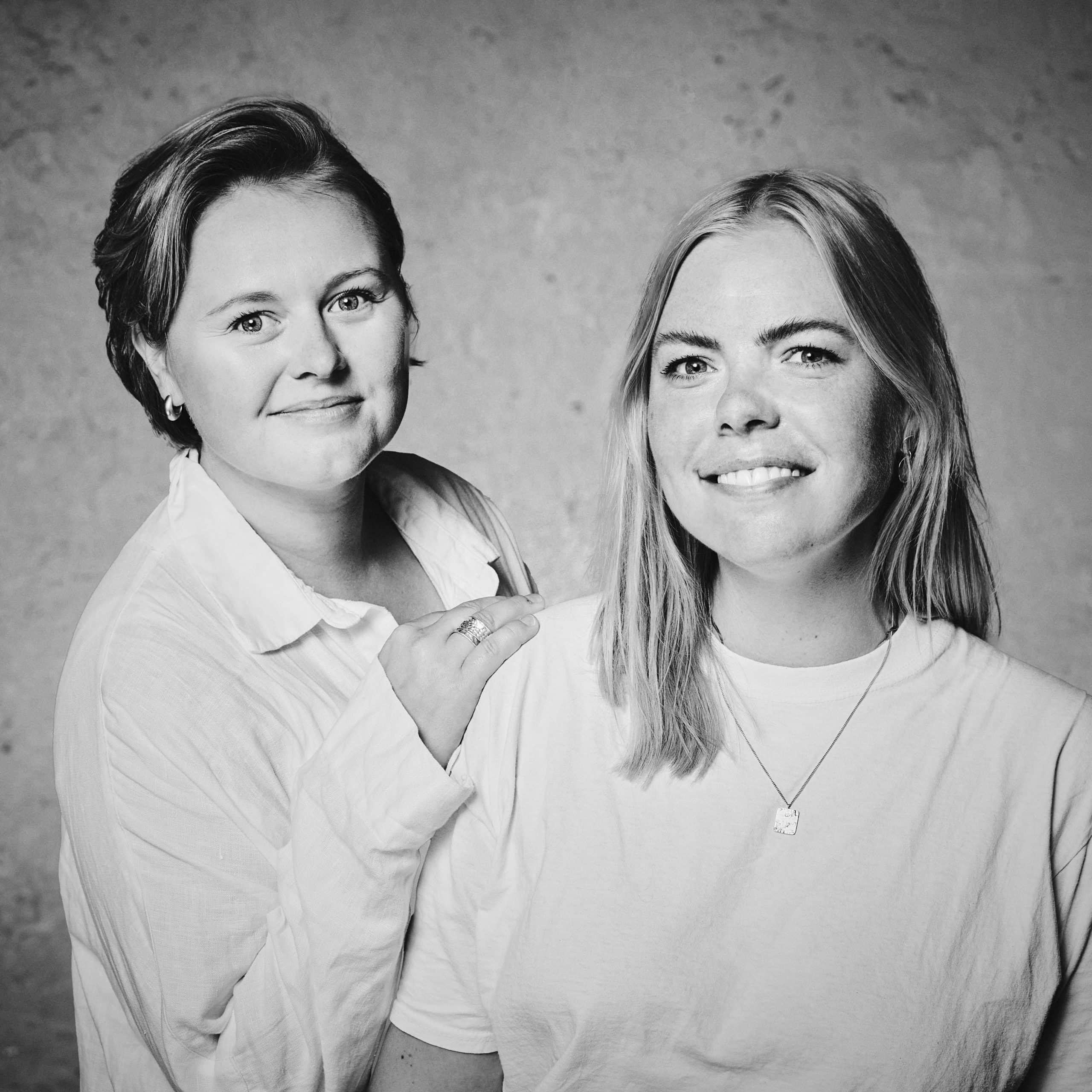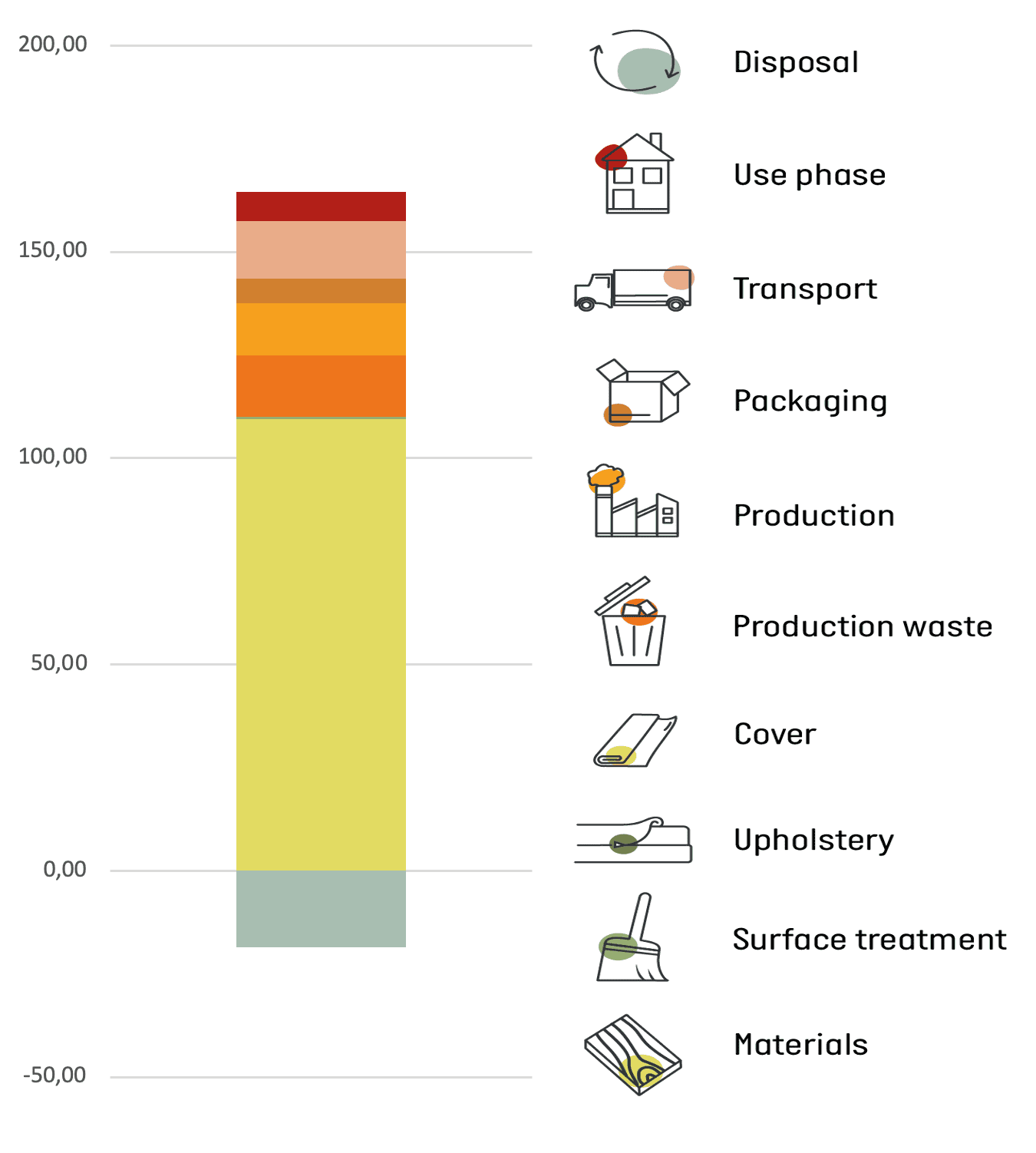Julie Strange and
Vilde Hagelund
Vilde Hagelund is an Oslo based furniture designer with degrees in both multimedia technology and product design, specializing in furniture design. With a PBA in Furniture Design, Julie Strange’s work exists at the intersection of furniture, interior design and art.
Inspired by children’s furniture
Vilde and Julie have joined forces in the blind date challenge since they drew the same brief. They didn’t know each other beforehand, but their collaboration has shown to be fruitful and beneficial for both of them.
Their brief is very open yet long and suggests they make a whole range of products. The two designers have decided to choose one of the presented tasks as they wouldn’t have time to answer everything. Hopefully, this was what the company intended for.
So, they are working on creating a responsive work setting that invites cooperation and community. They want their design to support agile working methods and eliminate hierarchy between co-workers.
Our shape is inspired by that classical children’s play table with the storage bowl in the middle where they put Legos or other toys and children play side by side or with each other.”
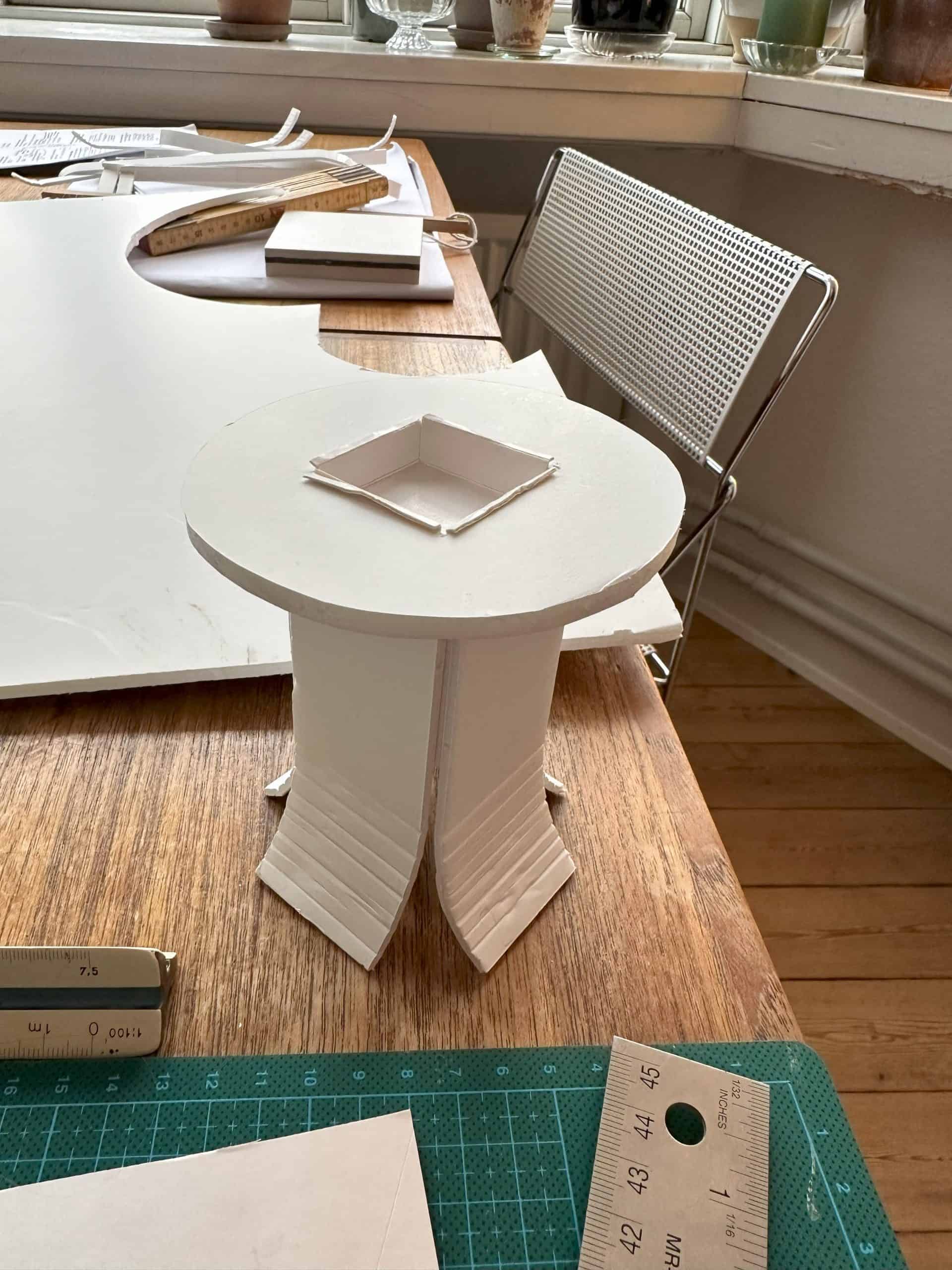
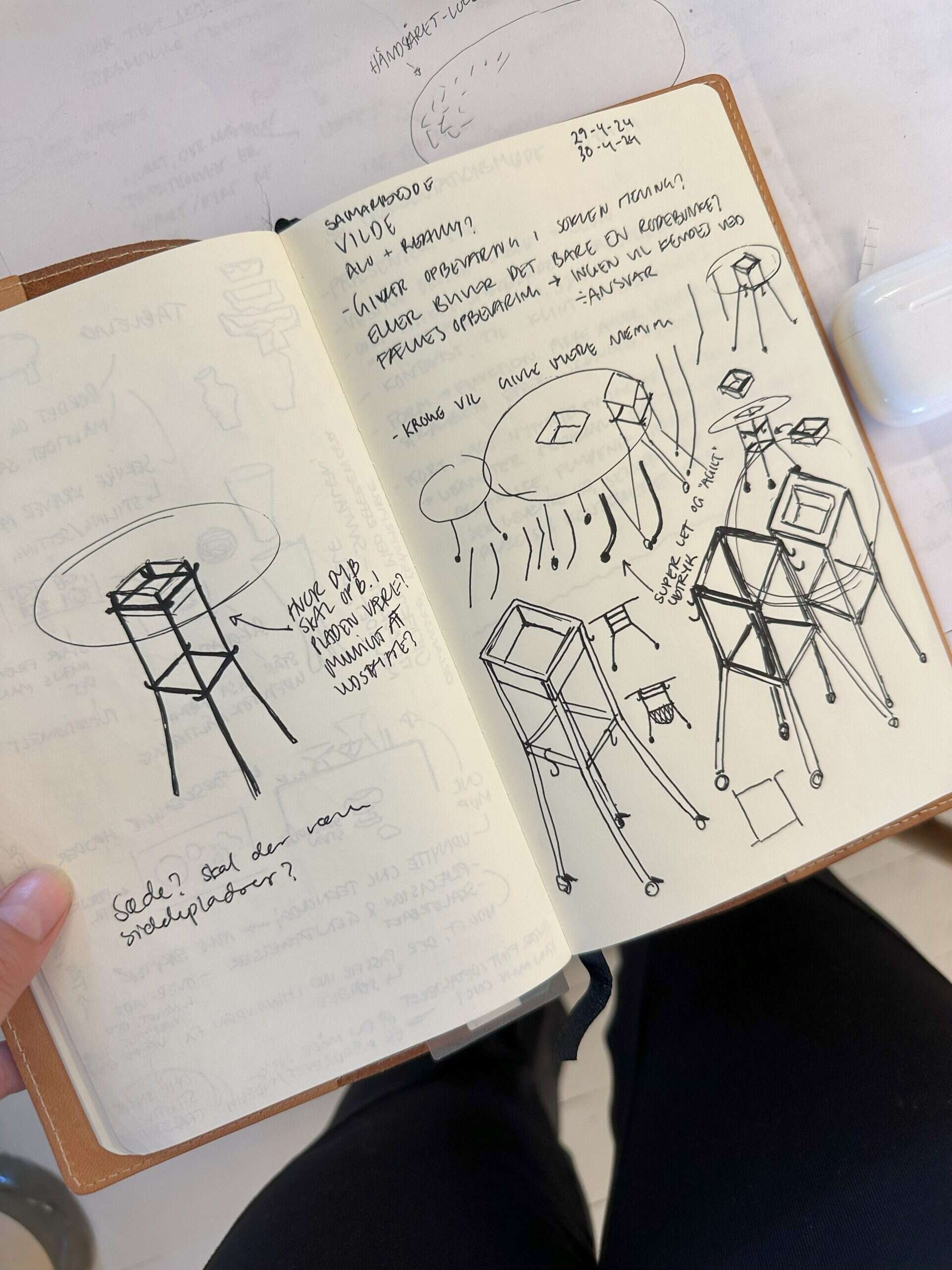
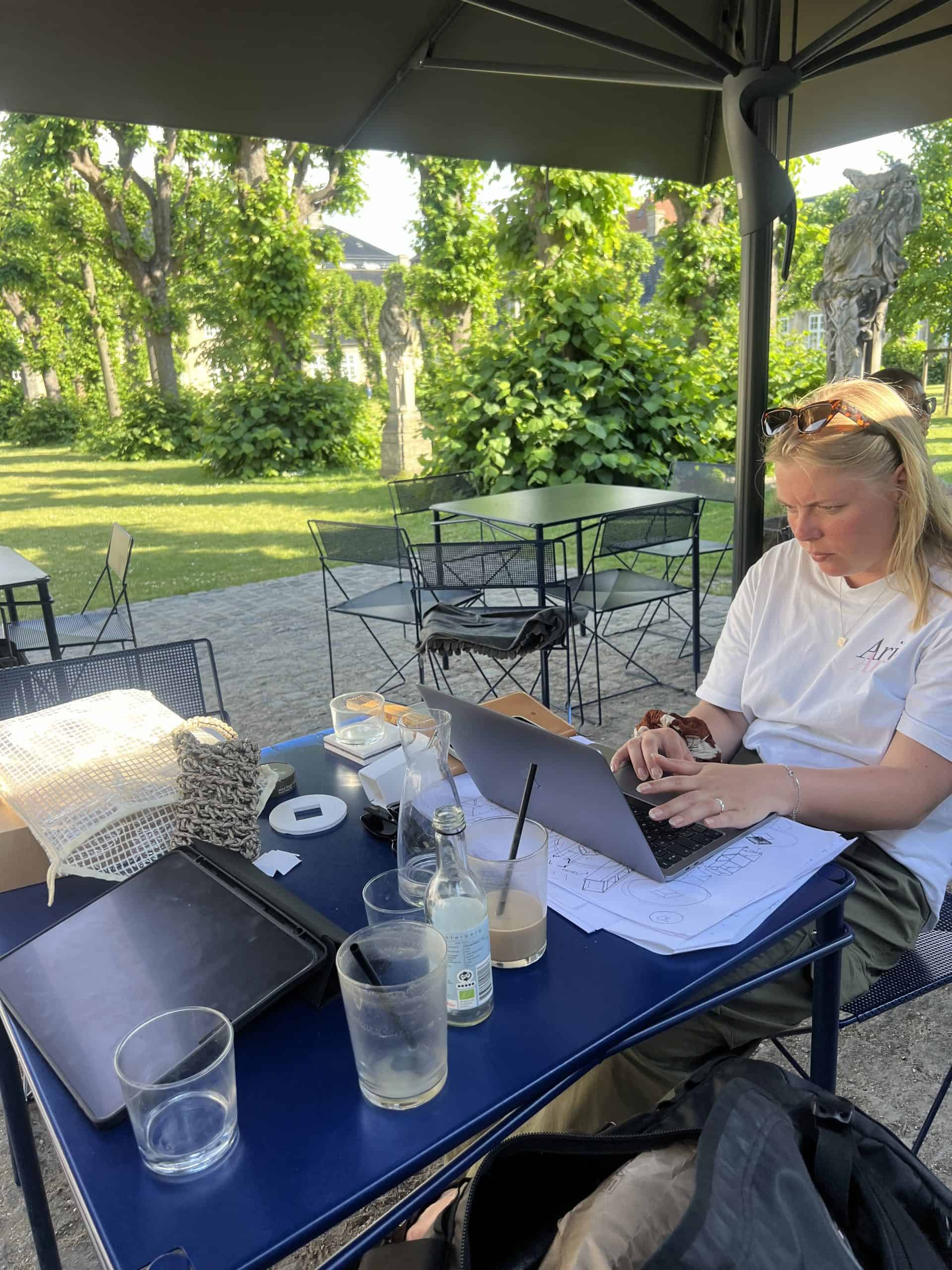
Systematic reduction
Vilde and Julie have been working seriously with the reduction parameter. Every time they have drawn a new line on their design, they have asked themselves how they could reduce the amount of material.
They work with two primary materials: aluminum and textile board. They have chosen aluminum because it is lightweight and can be recycled easily. The board is made from reused textile waste, and they like the idea of incorporating a material, that has already lived a life and that otherwise would have been wasted. They are also designing for disassembly and flat packing.
We have used Målbar in our design process, but we find it difficult to integrate when the materials we want to look up aren’t available. The textile board we’re using, is not in the tool, so we cannot see the emissions from it. But we think this material has a good story, and the company behind it advertises many advantages of it, so we think it is a good choice.”
The two designers like the whole challenge concerning the reduction of the climate footprint of their design, but they are not used to working with tools such as Målbar’s. However, they often work with reduction in mind, since it has been a foundational premise on their design education.
“Most often, we begin a design process by defining a problem we want to solve. And then we consider the importance of factors such as strength, durability, and aesthetics. Finally, we would look at which materials could be used to solve the task.”
Many designers are experimenting a lot with new materials, which is a good thing from Målbar’s point of view. So, for our tool to be more attractive to designers, we would benefit from adding more of the untraditional materials, than we already have in the tool.
For a material to be added to our tool, it requires a lot of data and calculations that must be made by the recognized databases. However, with our extensive knowledge of materials, we can usually assist designers in finding a similar emitting material (called proxy in LCA terms) in our tool, and we are also able to perform LCA’s ourselves.
Being free from others’ principles
Julie and Vilde think the blind date experiment is an interesting and exciting way of working and that it can kickstart a different kind of creative process, than they are used to. They are aware of the risk of creating something the company don’t like at all, but they also know that there will be many other companies at the ORGATEC fair.
This article reflects the designer’s own opinion and Målbar does not necessarily agree with their statements about materials, processes, etc.
Climate calculations and insights
Vildes and Julies named their design Huddle Table. It has an estimated total climate impact of 150 kg CO2eq.
They have succeeded in reducing the table’s emissions by around 20% by making the metal items easy to disassemble and recycle at end-of-life.
The choice of recycled aluminum for the table legs reduces the overall emission of the table by around 7%. The reason this is not higher is because a major part of the credit is given for allowing the material to be recycled at end-of-life.
The choice of recycled textile fiberboard does not seem to provide a climate benefit in comparison to using a standard wooden board. Primarily because of the textile board’s higher weight.
The table is assumed to be designed for knock-down, meaning it can be flat packed, which effectively reduces its transport emissions.
The emissions can be further reduced by choosing other materials, such as solid wood for the base and wood-based board for the tabletop.
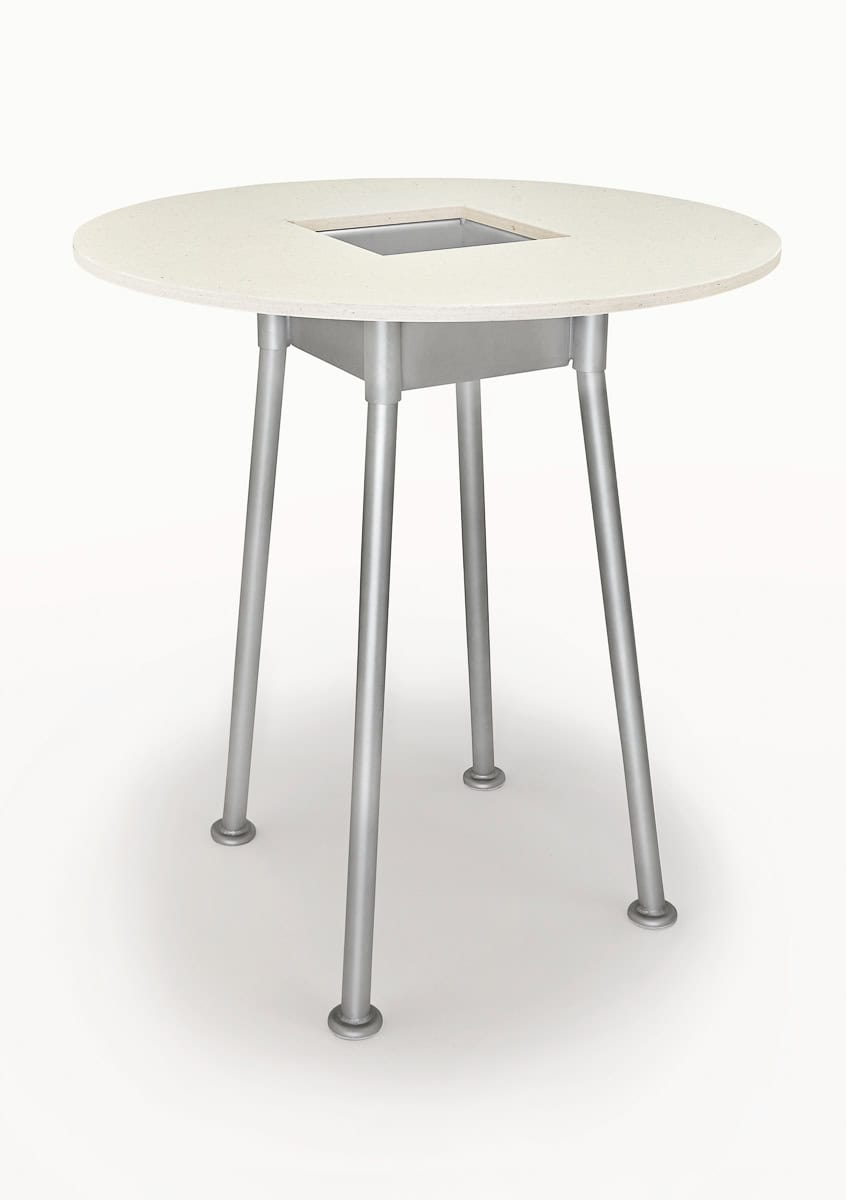
Photo by Kristine Funch
Explanation of climate bar
The climate bar shows how the emissions from the design are distributed between 10 sources within the product life cycle. Here you can see that the biggest impact comes from the materials, in this case the aluminum base. However, the design for disassembly allows for the recycling of the metal parts, hence a credit is given. This is illustrated by the part of the climate bar that lies below zero.
There are emissions from the use phase on all products, because of the waste that is generated from returned products from consumers.
Assumptions
- For metal profile and metal sheet component, a 10% waste is assumed.
- Målbar assumes that metals, plastics, and textiles are produced according to the global average unless we know differently. All other materials are assumed to be produced in the EU
- We assume a transport distance by lorry from supplier to warehouse of 1,000 km
- We assume a transport distance from warehouse to final client of 1,000 km
Målbar builds their assumptions on their experience with industrial production and LCA’s on manufacturing companies.
Context
Målbar participates in Danish Design Makers’ 2024 design challenge, The Blind Date experiment where 19 designers and design duos answer furniture briefs from anonymous European furniture companies. The designers use Målbar’s climate screening tool to gain insigths into the climate emissions of materials and production processes, learning about the climate impact of their design choices. Ultimately, the total climate footprint of each design will be calculated and presented at ORGATEC in Cologne on October 22nd-25th 2024.
